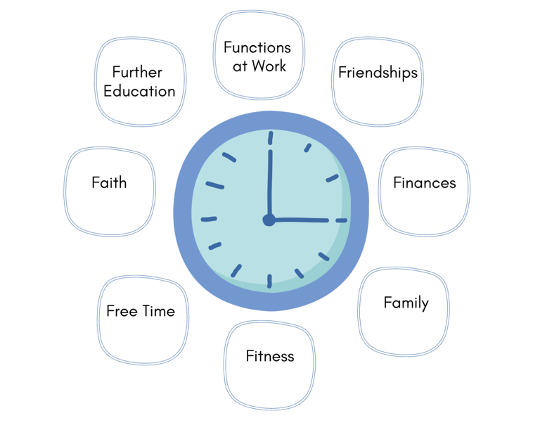The Personal and the Professional: 4 Steps to a Life Audit
What do you think of when you hear the expression “to perform an audit”? The Merriam-Webster dictionary’s first definition is what usually comes to mind: “a formal examination of an organization’s or individual’s accounts or financial situation.” However, in this blog I use the term not to consider our financial well-being, but rather the state of our personal and professional lives. Merriam-Webster’s second definition describes an audit as “a methodical examination and review,” and that is the sort of inventory from which we can all periodically benefit.
In your “life audit,” set aside some time to consider where you want to go in your personal and professional development. Honor both your personal and professional identities by reviewing what matters most to you, what you currently spend time on, and what you wish to change or enhance in both the personal and professional spheres. You might even ask yourself (whatever your age!), the classic question: “What do I want to be when I grow up?” or “Who do I want to be when I grow up?” Here are four steps to get you started.
Step 1. Identify Which Categories of Your Life You Wish to Audit
In her inspirational blog, Fabrega points to numerous aspects of our lives that we might wish to focus on, from how we spend our time to our education level to our physical fitness to our relationships with friends. These categories can help you decide where you want to focus and to see how interconnected they are across the personal and professional realms. You could even draw a visual to connect aspects of your life that matter most to you that give you satisfaction in both the personal and professional spheres.
Step 2. Decide How You Will Audit These Categories
To have a “methodical examination,” you need a method! Will it be a satisfaction rating scale? Amount of time spent on each area? Crafting questions you will ask yourself? Find an approach that interests you and that can be done systematically, perhaps creating a chart or using a premade template to organize your categories and your ratings.
Step 3. Step Back and Review Your Data
Yes, that’s right, data! Without judging yourself, try to simply see what your audit is telling you. Perhaps you have low ratings on the amount of time you spend on your own professional learning—and it’s something you really want to change. Or, you notice you are spending regular amounts of time on cooking and that is something you don’t want to change.
Step 4. Plan for Just One Month
Don’t try to change everything at once—instead, take an area that has revealed itself to be important and in need of more attention and time in the weeks to come. Decide on a concrete goal, set aside time in your calendar, and find the support you need to begin to work toward either a personal or a professional ambition. You can even look at your calendar entries from the prior month to assess where you are spending your time, and then use an approach called “time-blocking” to intentionally create time for goals in different ways in your month to come.
One of my favorite quotes, from a favorite author (Parker J. Palmer), is a simple truth: “We teach who we are.” As educators, we bring who we are to all of our work, and in turn, our personal lives are also shaped by our professional commitments and passions. Put simply, we cannot separate personal development from professional development, nor should we. The idea of keeping our personal lives and professional lives completely separate is not realistic nor always desirable, especially as educators who bring our social, emotional, and psychic energies to all of our workplace interactions (Malm, 2009). Considering both our personal and professional dimensions is essential for a holistic self-appraisal.
In the comments, please share an approach you take to “auditing” your personal and professional growth!



